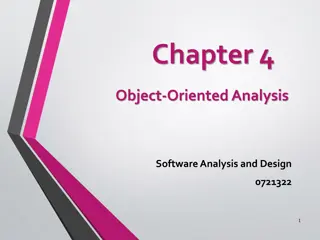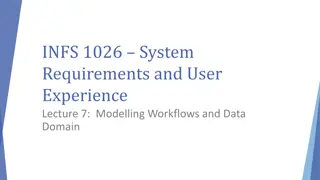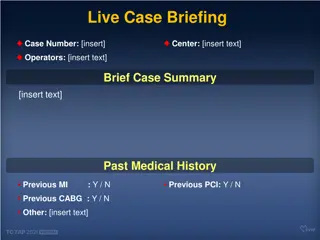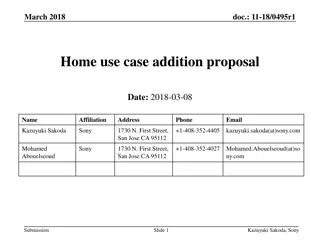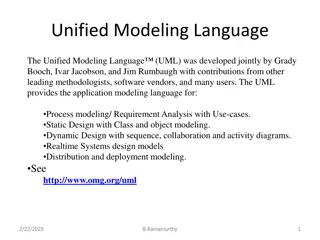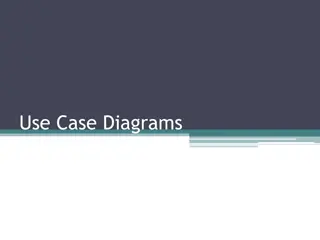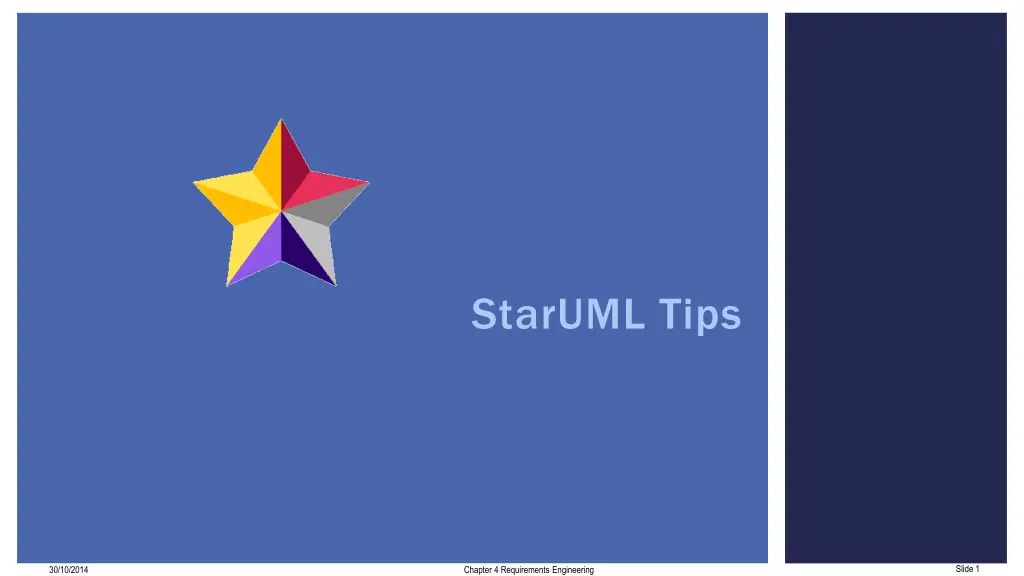
Mastering Use Case Diagrams for System Interaction Visualization
Learn how to effectively utilize Use Case Diagrams to visualize roles, interactions, and boundaries in a system. Understand the purpose of actors, use cases, associations, and generalizations. Explore the communication between actors and use cases for efficient system functionality.
Download Presentation

Please find below an Image/Link to download the presentation.
The content on the website is provided AS IS for your information and personal use only. It may not be sold, licensed, or shared on other websites without obtaining consent from the author. If you encounter any issues during the download, it is possible that the publisher has removed the file from their server.
You are allowed to download the files provided on this website for personal or commercial use, subject to the condition that they are used lawfully. All files are the property of their respective owners.
The content on the website is provided AS IS for your information and personal use only. It may not be sold, licensed, or shared on other websites without obtaining consent from the author.
E N D
Presentation Transcript
StarUML Tips Slide 1 30/10/2014 Chapter 4 Requirements Engineering
StarUML tips To move a selected object use Ctrl-<arrow key> For Use Case Diagrams drag Association from Use Case to Actor For Analysis Class Diagrams create a Use Case Diagram if you want Actors. Copy Actors to a Class Diagram. Utilize the "Classes (Basic)" and the "Robustness" icon libraries Activity Diagram Forks and Joins will be vertical or horizontal depending on how you draw them StarUML model explorer Slide 2
Use Case Diagrams Slide 3 March 2017
Use Case Diagrams (1) Purpose Visualize the different types of roles in a system Show how those roles interact with the system Usage Requirements Document (simple Use Case Diagrams) Design Document (advanced Use Case Diagrams Slide 4
Use Case Diagrams (2) Boundary Boundary (aka "Use Case Subject" or "Scope"): defines the considered scope of the diagram. Actor Actor: any entity that performs a role in a system. Could be a person, organization or an external system. Use Case Use Case: a function or an action within the system. Association Association: links an Actor to a Use Case Generalization Generalization: one Actor can inherit ( or "act as" the role of another Actor Slide 5
Use Case Diagrams (3) Note that the Owner of the Bike Shop can act as a Sales Rep if needed through Generalization Both the Sales Rep and the Owner are associated with "Run Reports." Is this redundant? No, there are certain reports a Sales Rep runs that an Owner could also run when he is assuming that role. But the separate Association between the Owner and Run Reports implies that there are some reports only the Owner can run. Slide 6
Use Case Diagrams Use Case diagrams consist of Actors External entities that interact with the system. Examples of actors include a user role (e.g., a system administrator, a bank customer, a bank teller) or another system (e.g., a central database, a fabrication line). Actors have unique names and descriptions. Use cases Describe the behavior of the system as seen from an actor s point of view. A use case describes a function provided by the system as a set of events that yields a visible result for the actors. Actors initiate a use case to access system functionality. The use case can then initiate other use cases and gather more information from the actors. When actors and use cases exchange information, they are said to communicate communicate 30/10/2014 Chapter 4 Requirements Engineering Slide 7
Use Case Description (1) The Overview Rent Bike Use Case Rent Bike Use Case Customers have the option to browse or search the database at a customer kiosk to select available bike(s) for rental and specify the rental period for each of the selected bikes. Alternatively, they can have an employee of the bike shop browse or search the database, make customer suggestions with which the customer can agree or disagree, and record the respective rental periods. The selected bikes are then physically examined by an employee to ensure their suitability for rental. If any bikes are unsuitable, they are marked for repair (see Update Bike use case) and alternative bike selections are made by either the customer or employee. Then the system will display to the employee any special discounts that might apply to frequent customers. The employee informs the customer of the final price (including all bike rates, rental durations, rental deposits and discounts) for all bikes rented, accepts the payment for the rental and authorizes the rental. The employee will check out the bikes by either associating the bike(s) with the pre-existing customer record, or by creating a new customer record and then associating that record with the bike(s). A receipt will be printed for the customer which lists the details and cost of each bike rental. A rental request may be cancelled at any time during this process, up until the bikes are associated with the customer. After that, the Return Bike use case will apply. 30/10/2014 Chapter 4 Requirements Engineering Slide 8
Use Case Description (2) The Scenarios Rent Bike Use Case Rent Bike Use Case Primary Flow Primary Flow Typical rental (consists of subordinate use cases) Employee Selects Bikes Employee Selects Customer Employee Confirms Reservation Alternate Flow Alternate Flow Cancellation after bike selection (consists of subordinate use cases) Customer Selects Bikes Cancel Reservation Alternate Flow Alternate Flow Cancellation after rental log selection (consists of subordinate use cases) Customer Selects Bikes Employee Selects Rental Log Cancel Reservation Alternate Flow Alternate Flow Customer selects bikes rental (consists of subordinate use cases) Customer Selects Bikes Employee Selects Rental Log Employee Selects Customer Employee Confirms Reservation Alternate Flow Alternate Flow Cancellation after customer selection (consists of subordinate use cases) Employee Select Bikes Employee Selects Customer Cancel Reservation Alternate Flow Alternate Flow Cancellation after bike selection (consists of subordinate use cases) Employee Selects Bikes Cancel Reservation 30/10/2014 Slide 9
Decomposed Use Case Diagrams Use case diagrams can be decomposed to lower levels This is why it is a good idea to number your Use Cases March 2017 Slide 10
More Advanced Use Case Diagrams This Use Case Diagram belongs in a Design Document The Use Cases are still functions, but only two are exposed to the Actors The include relationship indicates which functions are included in other functions, i.e., the behavior of the included use case is inserted into the behavior of the including use case Represents database functions March 2017 Slide 11
More Use Case Symbols (1) Package Package is an optional element that is extremely useful in complex diagrams. Packages are used to group used to group together use cases together use cases. March 2017 Slide 12
More Use Case Symbols (2) Extend is used instead of includes when one use case invokes another use case conditionally. conditionally. (see diagram) (see diagram) March 2017 Slide 13
More Use Case Symbols (3) Dependency Dependency: the extending use case is dependent on the base use case as a one way dependency, i.e. the base use case doesn t need any reference to the extending use case in the sequence. You cannot return bikes that have not been first rented, but you can rent bikes without returning them March 2017 Slide 14
One More Example A different example of Includes Extends Dependency Generalization March 2017 Slide 15

